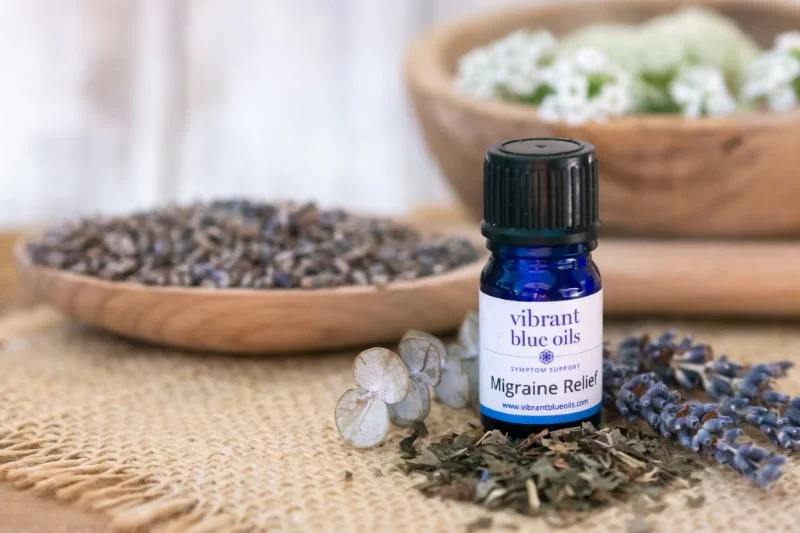- understanding-how-essential-oils-relieve-headaches
- top-essential-oils-for-headache-and-migraine-relief
- how-to-use-essential-oils-safely-and-effectively
- real-user-stories-relief-through-aromatherapy
- how-to-choose-quality-essential-oils
- where-to-find-curated-oils-you-can-trust
1. Understanding How Essential Oils Relieve Headaches
Essential oils have long been used in holistic healing, but their role in natural pain relief—especially for headaches and migraines—is gaining renewed attention in modern wellness. When inhaled or applied topically, specific oils interact with the nervous system and limbic brain, offering calming, anti-inflammatory, or muscle-relaxing effects that can help reduce headache intensity or even prevent onset.
Unlike over-the-counter medications, essential oils don’t just mask symptoms—they may target the root causes like tension, hormonal imbalances, or sinus congestion. For people who prefer a more natural, integrative approach, these aromatic remedies offer real relief with fewer side effects.
2. Top Essential Oils for Headache and Migraine Relief
2.1. Peppermint Oil: The Cooling Classic
With its high menthol content, peppermint oil delivers a cooling sensation that promotes blood flow and helps relax tight muscles. A few drops diluted on the temples or neck can provide near-instant relief. It’s especially effective for tension headaches caused by screen fatigue or neck strain.
2.2. Lavender Oil: Soothing the Mind and Body
Lavender is well-known for its calming effect on the nervous system. Research shows it can reduce migraine frequency and severity, particularly when inhaled at the first sign of symptoms. It’s a favorite for nighttime use and blends beautifully with eucalyptus or chamomile for full-body relaxation.
2.3. Eucalyptus Oil: Open Up and Breathe
When headaches are sinus-related, eucalyptus is your go-to. Its anti-inflammatory and decongestant properties can help reduce sinus pressure. Adding a few drops to a steaming bowl of water for inhalation can work wonders in clearing congestion and easing related headaches.
2.4. Rosemary Oil: For Circulation and Focus
This energizing herb isn't just for your spice rack. Rosemary essential oil supports improved circulation and reduces stress—two contributors to migraine episodes. Some users find it helps with mental clarity as well, making it a solid companion for stressful workdays.
3. How to Use Essential Oils Safely and Effectively
3.1. Topical Application with Carrier Oils
Direct application of essential oils is only safe when diluted. Use carrier oils like coconut, jojoba, or sweet almond to avoid skin irritation. Gently massage onto temples, jawline, neck, or shoulders. Always patch test new blends first to rule out sensitivities.
3.2. Diffusion and Inhalation
Diffusing essential oils fills your space with therapeutic aromas. For a quick solution, add a few drops to a tissue and inhale deeply. You can also add them to a bowl of hot water and breathe in the steam—perfect for sinus headaches.
3.3. Roll-Ons and Blended Balms
For on-the-go relief, pre-diluted roll-on oils are a game changer. Keep one in your bag or desk for quick access. Some even come in headache-specific blends combining several oils to maximize efficacy.
4. Real User Stories: Relief Through Aromatherapy
4.1. Emily’s Case: From Pain Meds to Peppermint
Emily, a Brooklyn-based graphic designer, used to rely on ibuprofen daily for her work-induced tension headaches. After a friend introduced her to peppermint and lavender oil, she began using a custom roll-on blend twice a day. Within two weeks, she reduced her reliance on pills by 70% and reported “a calmer, more balanced work rhythm.”
4.2. Mark’s Migraine Routine
Mark, a marathon runner and migraine sufferer, swears by his post-run eucalyptus-lavender inhalation blend. “It’s my post-run ritual. It clears my sinuses and prevents the post-exertion migraines I used to get,” he shared on an online forum dedicated to natural headache relief.
5. How to Choose Quality Essential Oils
5.1. Purity and Sourcing
Not all essential oils are created equal. Look for oils labeled as 100% pure, therapeutic-grade, and preferably organic. Reputable producers will often provide batch testing results or GC/MS reports for transparency.
5.2. Packaging and Shelf Life
Essential oils should come in dark amber or cobalt blue glass bottles to protect them from UV degradation. Make sure they’re stored tightly sealed in cool, dry places to preserve potency—especially if you plan to use them long term.
6. Where to Find Curated Oils You Can Trust
If you’re overwhelmed by choices, start with curated platforms that focus on purity, efficacy, and transparent sourcing. Scent Snob offers a wide selection of headache-focused essential oils and ready-to-use blends that are reviewed and rated by real users. Whether you're a beginner or a seasoned wellness enthusiast, it's a reliable destination to find your next natural remedy.


0 comments